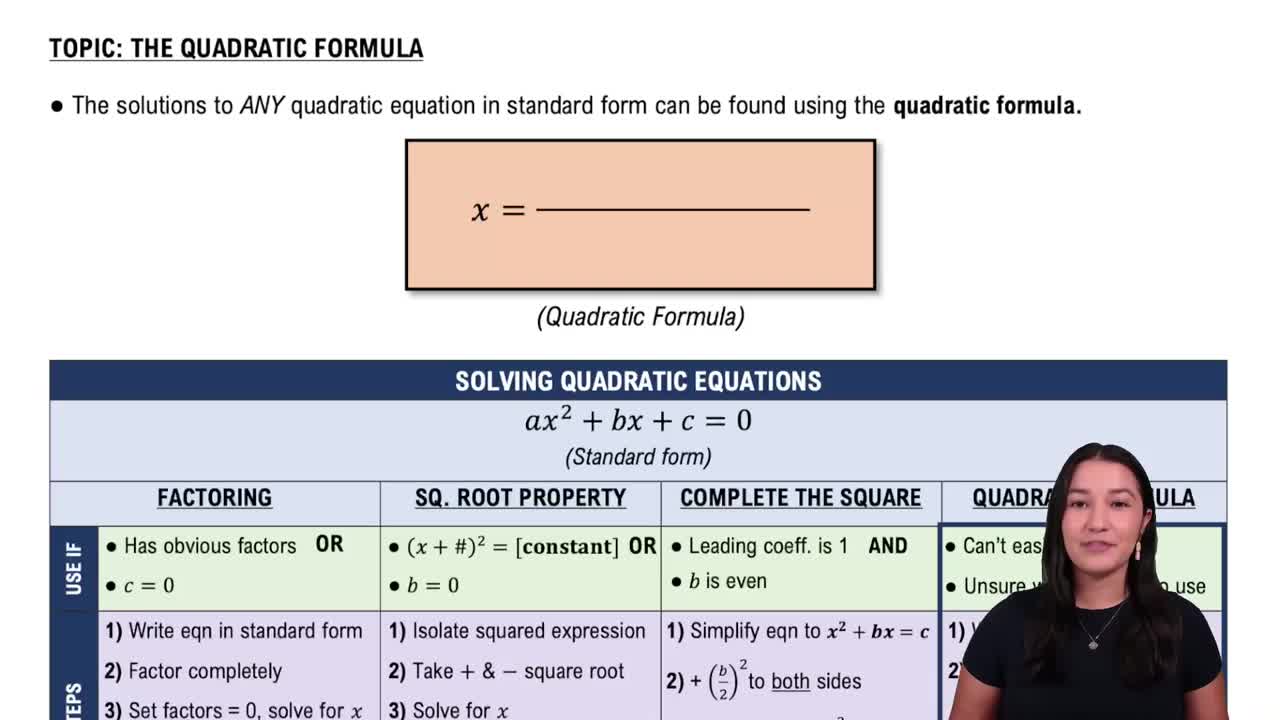Here are the essential concepts you must grasp in order to answer the question correctly.
Quadratic Functions
A quadratic function is a polynomial function of degree two, typically expressed in the form f(x) = ax^2 + bx + c, where a, b, and c are constants. The graph of a quadratic function is a parabola, which can open upwards or downwards depending on the sign of 'a'. Understanding the general shape and properties of parabolas is essential for graphing and analyzing quadratic functions.
Recommended video:
Solving Quadratic Equations Using The Quadratic Formula
Vertex of a Parabola
The vertex of a parabola is the highest or lowest point on the graph, depending on whether it opens downwards or upwards. For a quadratic function in standard form, the vertex can be found using the formula (-b/2a, f(-b/2a)). The vertex is crucial for determining the maximum or minimum value of the function and plays a key role in graphing the function accurately.
Recommended video:
Domain and Range
The domain of a function refers to all possible input values (x-values) for which the function is defined, while the range refers to all possible output values (y-values) that the function can produce. For quadratic functions, the domain is typically all real numbers, while the range depends on the vertex; if the parabola opens upwards, the range starts from the vertex's y-coordinate to infinity, and if it opens downwards, it extends from negative infinity to the vertex's y-coordinate.
Recommended video:
Domain & Range of Transformed Functions
 Verified step by step guidance
Verified step by step guidance Verified Solution
Verified Solution



 7:42m
7:42m